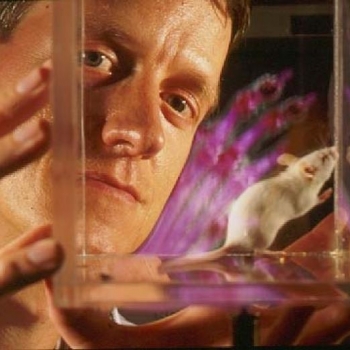Current Research and Scholarly Interests
Wild species show spectacular differences in morphology, physiology, behavior, disease susceptibility, and lifespan. Although many organisms have now been sequenced, we still know relatively little about the specific DNA sequence changes that underlie key species-specific traits. My laboratory uses a combination of genetic and genomic approaches to identify the detailed molecular mechanisms that control evolutionary change in vertebrates, with a focus on 5 fundamental questions:
1. Are new evolutionary traits controlled by countless genetic differences of small effect, or by a few genetic changes with large effects?
2. What genes have changed to produce interesting evolutionary differences in nature?
3. What kinds of mutations have occurred in these genes (e.g., dominant or recessive, coding or regulatory, preexisting or de novo)?
4. How predictable is evolution? If you know how evolution has occurred in one population, can you predict the genes and mutations that underlie the same trait in different populations?
5. How has evolution produced the unique characteristics of humans?
We study these questions using a variety of methods in stickleback fish, mice, and humans.
Stickleback fish have recently diversified in thousands of new postglacial environments, offering an unusually powerful system for mapping the molecular basis of vertebrate evolution. My lab pioneered the development of many new genetic and genomic resources for sticklebacks, including crosses between divergent populations, genetic mapping of traits, comparative genome sequencing, and testing the molecular basis of evolutionary differences using transgenic and CRISPR methods. Our studies have revealed the molecular mechanisms that control repeated evolution of armor plate patterning, pelvic reduction, and spine and skin color changes in nature. We find that big evolutionary changes are controlled by regulatory changes in key developmental control genes. Although inactivating mutations in such genes are deleterious or lethal, evolution can preserve viability and increase fitness of wild populations by tweaking the expression of key control genes in particular tissues. Interestingly, the same genes are used repeatedly when similar phenotypes evolve in different populations, revealing a surprising commonality to the molecular mechanisms controlling evolutionary change in diverse organisms.
Mice are also a powerful system for studying traits and diseases in mammals, and for testing the phenotypic effects of particular sequence changes that have occurred in other species. Our genetic studies in mice have identified fundamental signaling pathways that control formation and patterning of cartilage, bone, and joints, and have revealed the regulatory sequences that control expression of many key genes during development and tissue injury. We also use genome editing in mice to model sequence changes that underlie common traits in other species, including some of the most prevalent pigmentation, height, and arthritis traits found in humans.
The genes and mechanisms that we have identified in fish and mice turn out to control major differences in human morphology, hair color, arthritis susceptibility, and incidence of major psychiatric diseases in billions of people around the world. To further study the genomic changes that underlie key evolutionary traits and diseases in humans, we are developing innovative new genetic approaches to compare gene expression and developmental differences between human and chimpanzee cells in vitro, and to map the specific genomic regions controlling these differences using targeted modification and recombination between primate chromosomes. Although we are still far from knowing the detailed molecular basis of most human traits, we are optimistic that many aspects of this problem can now be studied computationally and experimentally, providing new insights into both human origins and human medicine.


